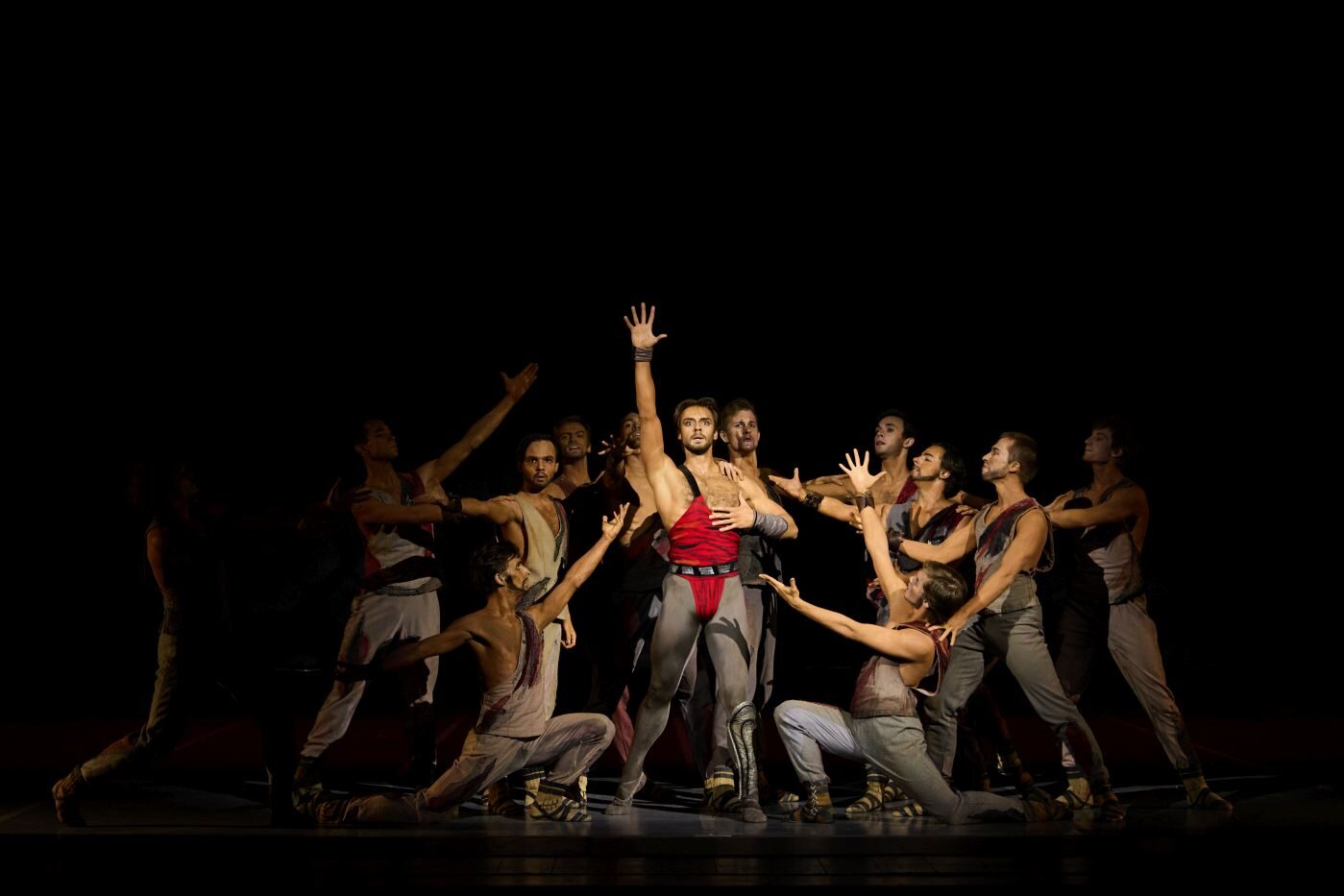Bavarian State Ballet’s Matteo Dilaghi, Mia Rudic and Matej Urban
Munich, Germany
May, 2016
by Ilona Landgraf
Copyright © 2016 by Ilona Landgraf
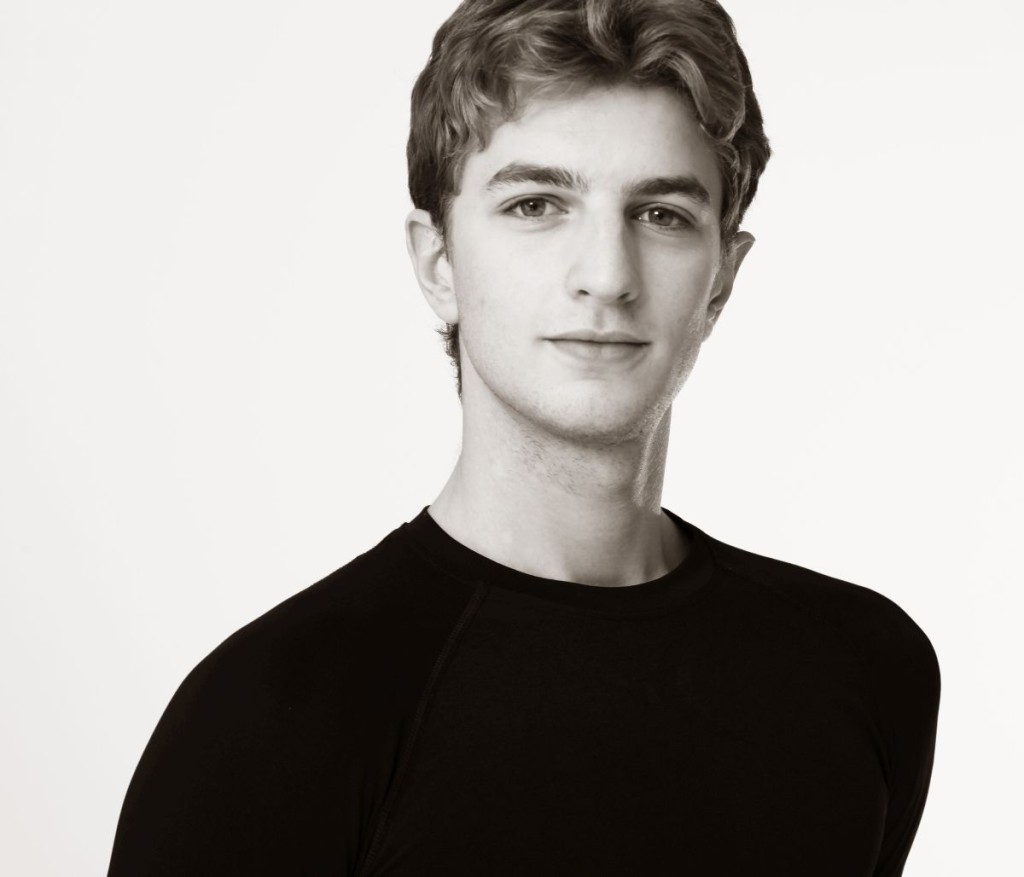
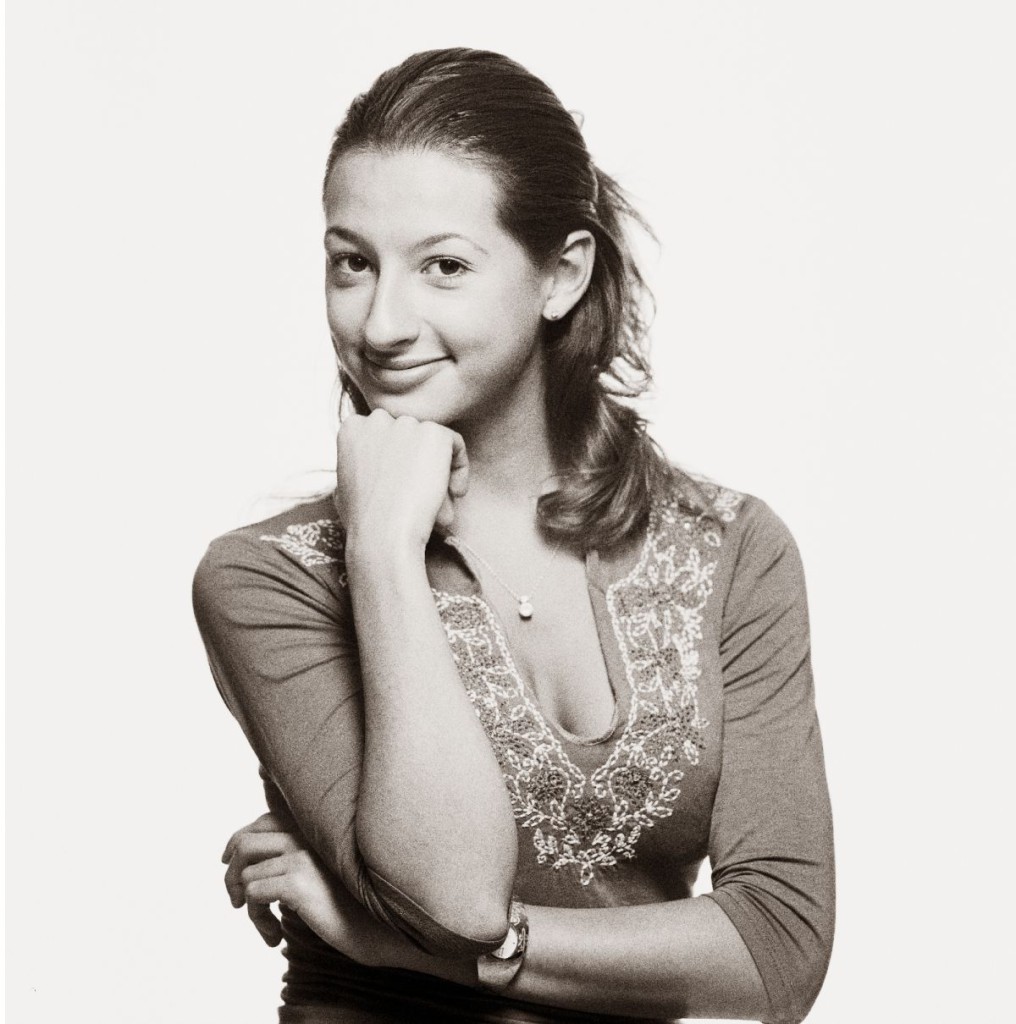
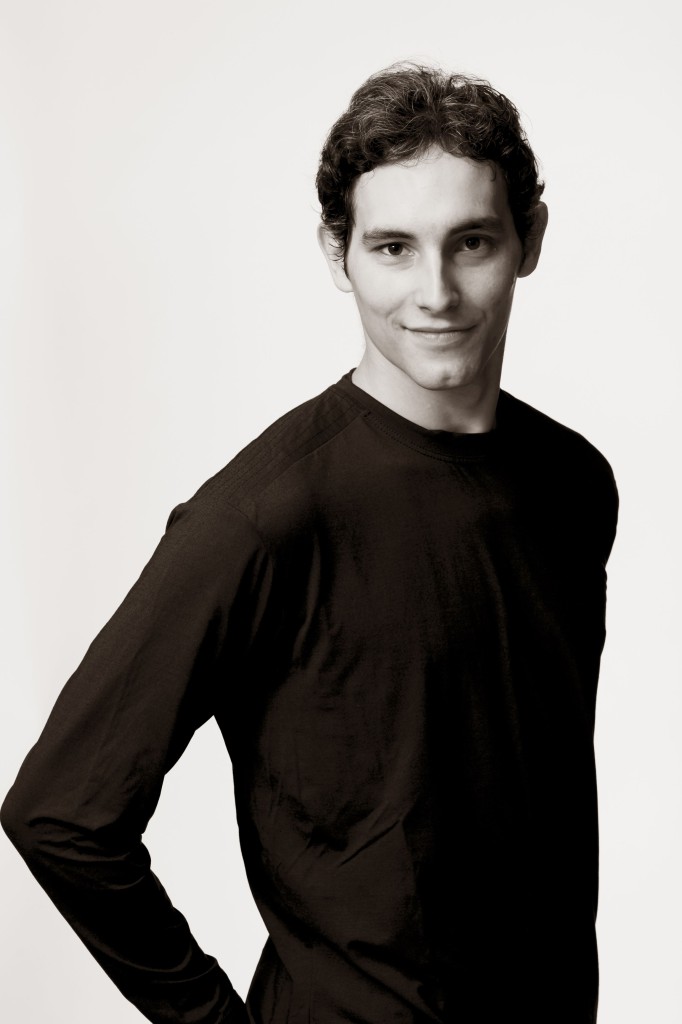 Pina Bausch’s “Für die Kinder von gestern, heute und morgen” (“For the children of yesterday, today and tomorrow”), which entered the Bavarian State Ballet’s repertory just a few weeks ago, has since then caused a stir. Audiences, though divided at first, are meanwhile storming the box office. An extra performance has been scheduled.
Pina Bausch’s “Für die Kinder von gestern, heute und morgen” (“For the children of yesterday, today and tomorrow”), which entered the Bavarian State Ballet’s repertory just a few weeks ago, has since then caused a stir. Audiences, though divided at first, are meanwhile storming the box office. An extra performance has been scheduled.
“For the children…” is the first of Bausch’s recent pieces transferred to a company other than her own in Wuppertal. Rehearsals were complex; the result is a stunning success. With “For the children…” the company has gained a new face. Instead of being protected by taking on a role’s character, each dancer had to show their own personality on stage. By being forced to talk they moreover explored new artistic ground.
I interviewed three dancers of the cast: Matteo Dilaghi, Mia Rudic and Matej Urban. We met in the company’s rehearsal premises in Munich’s city center to talk about their careers, their plans for the future and Pina Bausch’s piece.
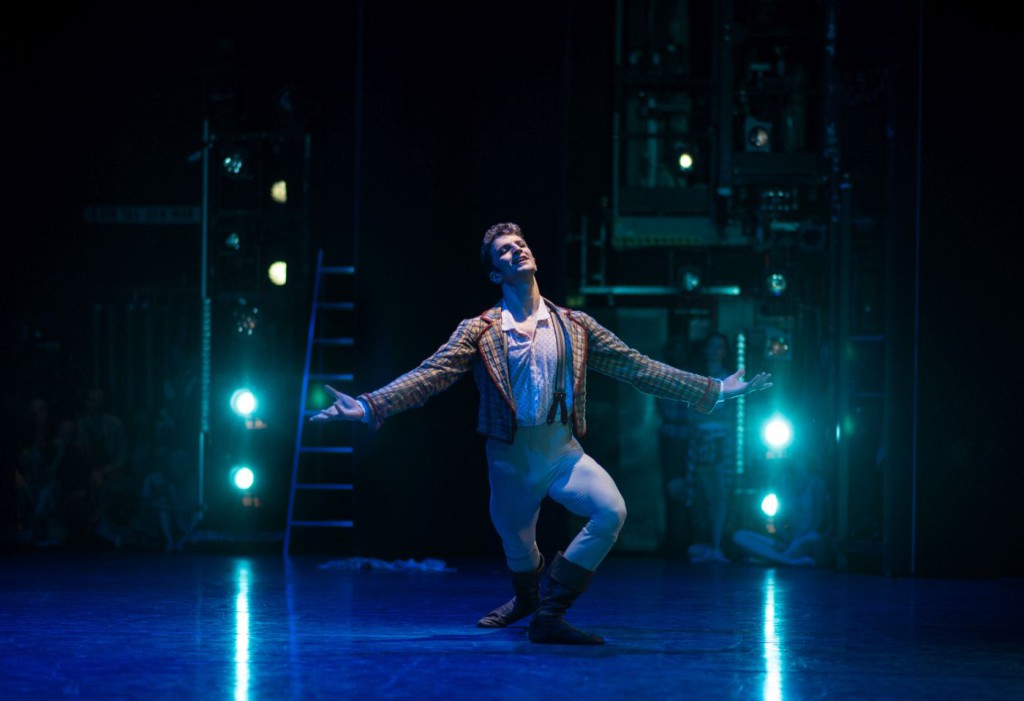 Matteo Dilaghi has danced in Munich for these past five years. Born in Italy in a small town near to Florence, his hunger for movement made him try football, basketball, tennis and, finally, hip-hop and break dance. Hip-hop made him catch fire. When his teacher told him that doing ballet would further his hip-hop talent, Dilaghi turned to the barre. He liked the classical training and enrolled at the major ballet school in Florence for professional guidance. At the age of fifteen he auditioned for the La Scala Theater Ballet School, was accepted, continued his training in Milan and, three years later, graduated in 2011. The same year he received a scholarship for Bavarian State Ballet II, the Junior Company. One year later he joined the main company. “I’ve never felt forced. My parents have been with me but they have given me the freedom to find my path. Something inside of me pulls me forward.” His mother, who had been coming from Italy, was crying when watching Matteo in “For the children…“. In May she will be back together with Matteo’s sister and brother to see him again on stage.
Matteo Dilaghi has danced in Munich for these past five years. Born in Italy in a small town near to Florence, his hunger for movement made him try football, basketball, tennis and, finally, hip-hop and break dance. Hip-hop made him catch fire. When his teacher told him that doing ballet would further his hip-hop talent, Dilaghi turned to the barre. He liked the classical training and enrolled at the major ballet school in Florence for professional guidance. At the age of fifteen he auditioned for the La Scala Theater Ballet School, was accepted, continued his training in Milan and, three years later, graduated in 2011. The same year he received a scholarship for Bavarian State Ballet II, the Junior Company. One year later he joined the main company. “I’ve never felt forced. My parents have been with me but they have given me the freedom to find my path. Something inside of me pulls me forward.” His mother, who had been coming from Italy, was crying when watching Matteo in “For the children…“. In May she will be back together with Matteo’s sister and brother to see him again on stage.
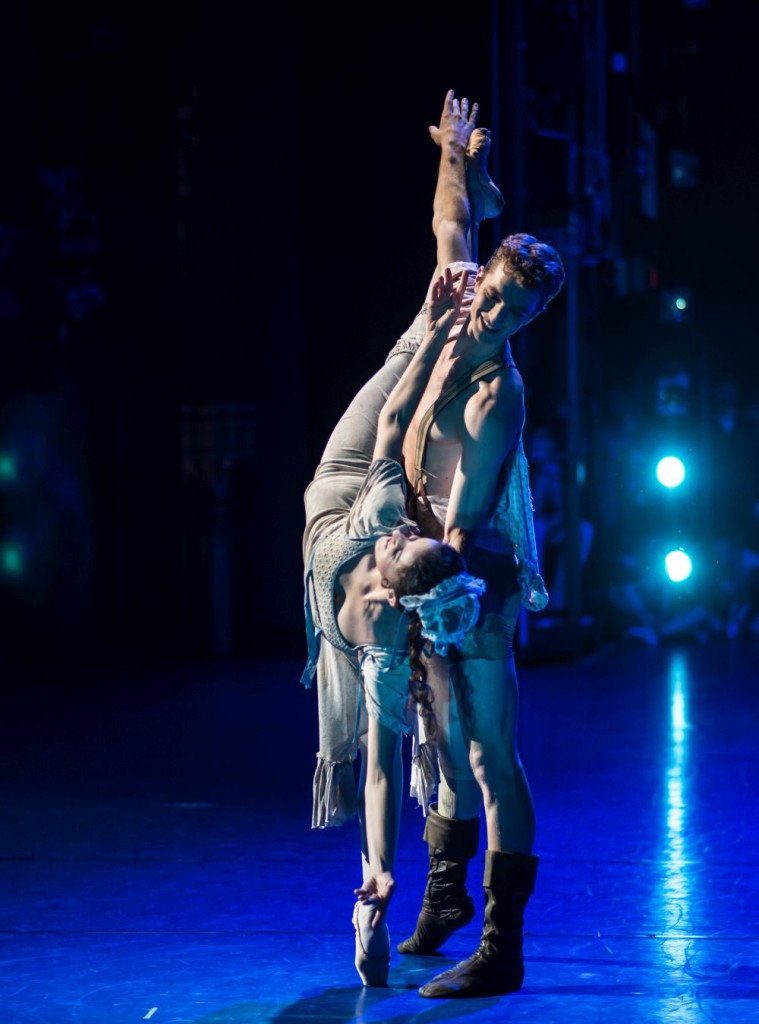 Dilaghi names Leonid Sarafanov, Roberto Bolle, Friedemann Vogel, Steven McRae and Edward Watson as his role models. “Watching videos of them working in the studio motivates me. Edward Watson’s work is just amazing! I learn a lot by watching.”
Dilaghi names Leonid Sarafanov, Roberto Bolle, Friedemann Vogel, Steven McRae and Edward Watson as his role models. “Watching videos of them working in the studio motivates me. Edward Watson’s work is just amazing! I learn a lot by watching.”
Last season Dilaghi was Lysander in John Neumeier’s “A Midsummer Night’s Dream” which was his first major classical role. His part in “For the children…” has propelled him forward. “The Bausch piece is the biggest thing I’ve done so far. It’s a highlight in my career, especially an emotional highlight. I hadn’t expected this. The rehearsals were absolutely rewarding, basically the whole company grew while working on the piece.” Dilaghi admits that the extensive acting and especially the scenes in which he had to to speak German were challenging. At one point, as a barber, he had to gossip extensively at the shop about his grandfather’s merits while cutting a customer’s hair.
“Waking up on the morning of the premiere I was freaking out with panic. But when stepping on stage all fright flew away and I felt at home. I was curious about what would happen, how the audience would react. Would they laugh or not? They carried me forward. It was fascinating to talk to the audience, to look into their eyes. Usually when dancing I have a blurred perception of who is sitting there watching me, but this time I saw everyone. It was incredible!”
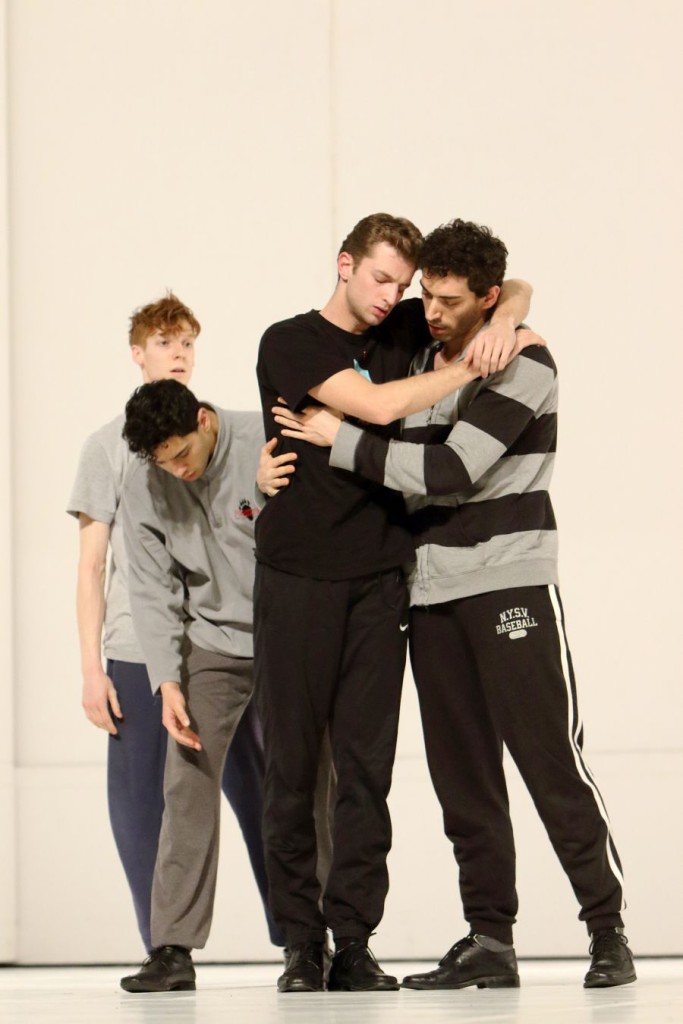
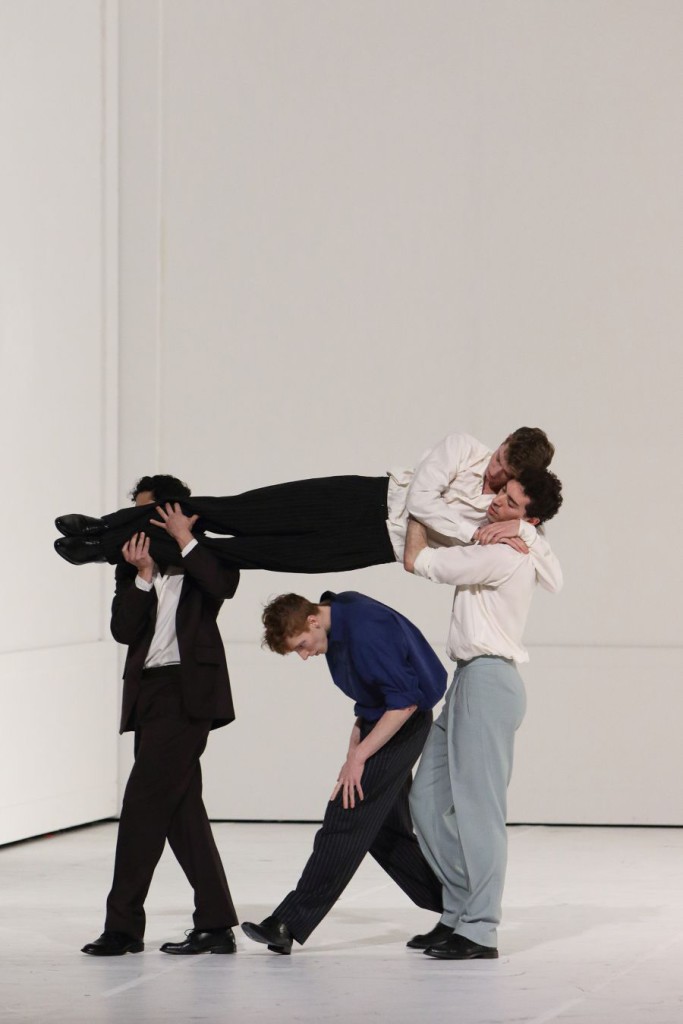 “I was totally surprised when I found out how comfortable I was with speaking. Was this me? I hadn’t been aware of this ability.” Lutz Förster, who had danced the role in the original cast in Wuppertal, had prepared Dilaghi carefully. “My colleagues joked that I was cast because I look like him, tall and blonde”, Dilaghi laughs, “Yet casting had been carefully considered. “We had a workshop in which all male dancers learned each part watched over by the Wuppertal staging team. The moment Lutz Förster stepped into the studio I felt something special. He has an aura around him. I knew instantly that I wanted to have his role. The dialogue and the acting – that was me! I don’t know why but the chemistry between us was instantly right.”
“I was totally surprised when I found out how comfortable I was with speaking. Was this me? I hadn’t been aware of this ability.” Lutz Förster, who had danced the role in the original cast in Wuppertal, had prepared Dilaghi carefully. “My colleagues joked that I was cast because I look like him, tall and blonde”, Dilaghi laughs, “Yet casting had been carefully considered. “We had a workshop in which all male dancers learned each part watched over by the Wuppertal staging team. The moment Lutz Förster stepped into the studio I felt something special. He has an aura around him. I knew instantly that I wanted to have his role. The dialogue and the acting – that was me! I don’t know why but the chemistry between us was instantly right.”
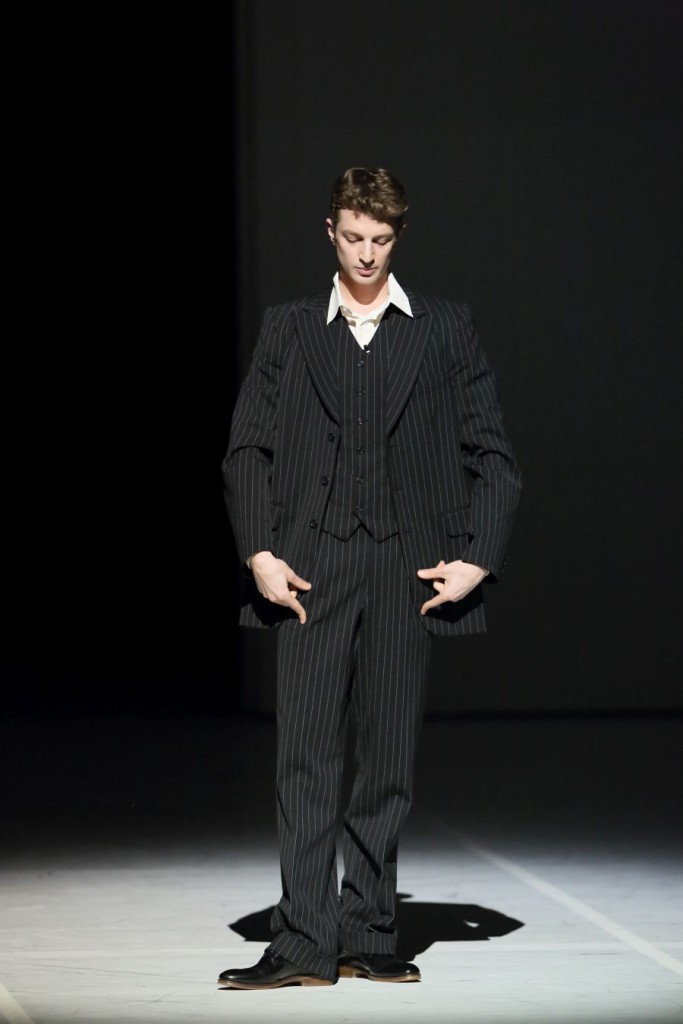
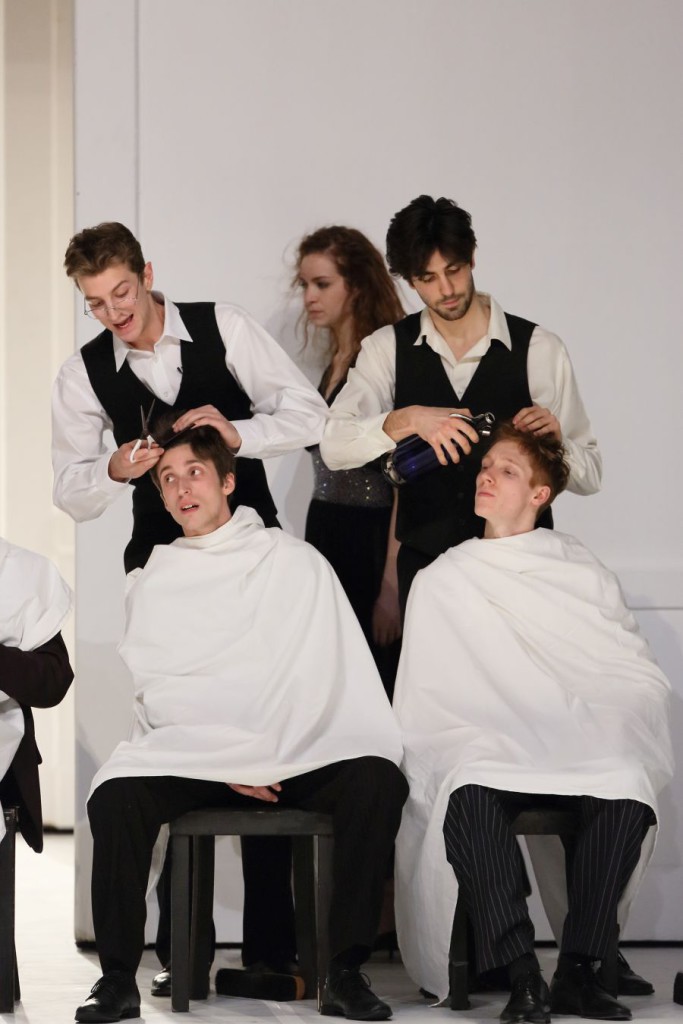 Dilaghi carried out his barber job with stunning wit. In another part he performs a solo in which he only moves his hands and arms. It is the only part Bausch created entirely herself. “Doing this was harder than a couple of pirouettes. It has to look simple, Lutz said. If you try forcing it you’ll lose it. He showed it to us and it seemed playful as if he was immersed in his thoughts but in fact he was totally precise. Every angle, every centimeter counts. Working with Lutz Föster was amazing!”
Dilaghi carried out his barber job with stunning wit. In another part he performs a solo in which he only moves his hands and arms. It is the only part Bausch created entirely herself. “Doing this was harder than a couple of pirouettes. It has to look simple, Lutz said. If you try forcing it you’ll lose it. He showed it to us and it seemed playful as if he was immersed in his thoughts but in fact he was totally precise. Every angle, every centimeter counts. Working with Lutz Föster was amazing!”
Maybe Dilaghi will tap into his talent for speaking roles later in his career. For now he wants to stay focused on dancing. “It would be distracting to pursue two paths. I was so into Pina’s piece that getting back to the barre for preparing “La Bayadère” felt a bit weird. These are two different worlds.” Next to ballet Dilaghi loves music; he tries himself out as a DJ and plays the guitar and the drums. He retains his passion for sports, especially for watching football. Certainly he won’t miss the next match between the FC Bayern and ACF Fiorentina.
Most impressive with Dilaghi is his clear idea of how to pursue his career. The twenty-four-year-old is straightforward, determined and energetic. He pushes ahead but at the same time stays grounded: “My aim is to build something. Every day I learn something new, small things. This makes me happy. I would never think I have failed because of not getting a certain role or not being promoted. I do what I love as a job. That’s the most important thing.”
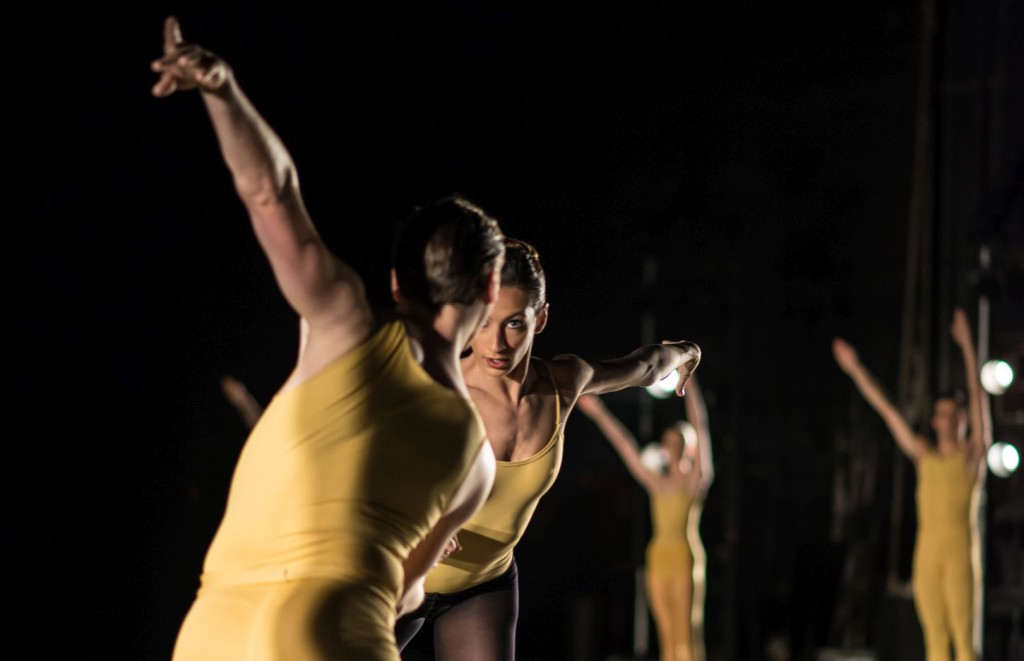 The moment Mia Rudic enters the room her bubbling vitality fills the air. Rudic is speaking fast and with verve. Born in Novi Sad in Serbia she started ballet training at the local ballet school at the age of nine. After her primary years she continued her education at the Lujo Davico Ballet School in Belgrade. As the dance scene doesn’t prosper in Serbia, Rudic wasn’t sure if a career as a dancer was possible. At that time she met a friend, Vladimir Kocić, who was dancing with Hamburg Ballet. He encouraged her to audition for the Ballet School of Hamburg Ballet. Rudic was accepted and in 2003 moved to Hamburg where she graduated two and a half years later. She auditioned at a few companies and at the Bavarian State Ballet, where Ivan Liška was searching for a ballerina. Rudic didn’t
The moment Mia Rudic enters the room her bubbling vitality fills the air. Rudic is speaking fast and with verve. Born in Novi Sad in Serbia she started ballet training at the local ballet school at the age of nine. After her primary years she continued her education at the Lujo Davico Ballet School in Belgrade. As the dance scene doesn’t prosper in Serbia, Rudic wasn’t sure if a career as a dancer was possible. At that time she met a friend, Vladimir Kocić, who was dancing with Hamburg Ballet. He encouraged her to audition for the Ballet School of Hamburg Ballet. Rudic was accepted and in 2003 moved to Hamburg where she graduated two and a half years later. She auditioned at a few companies and at the Bavarian State Ballet, where Ivan Liška was searching for a ballerina. Rudic didn’t 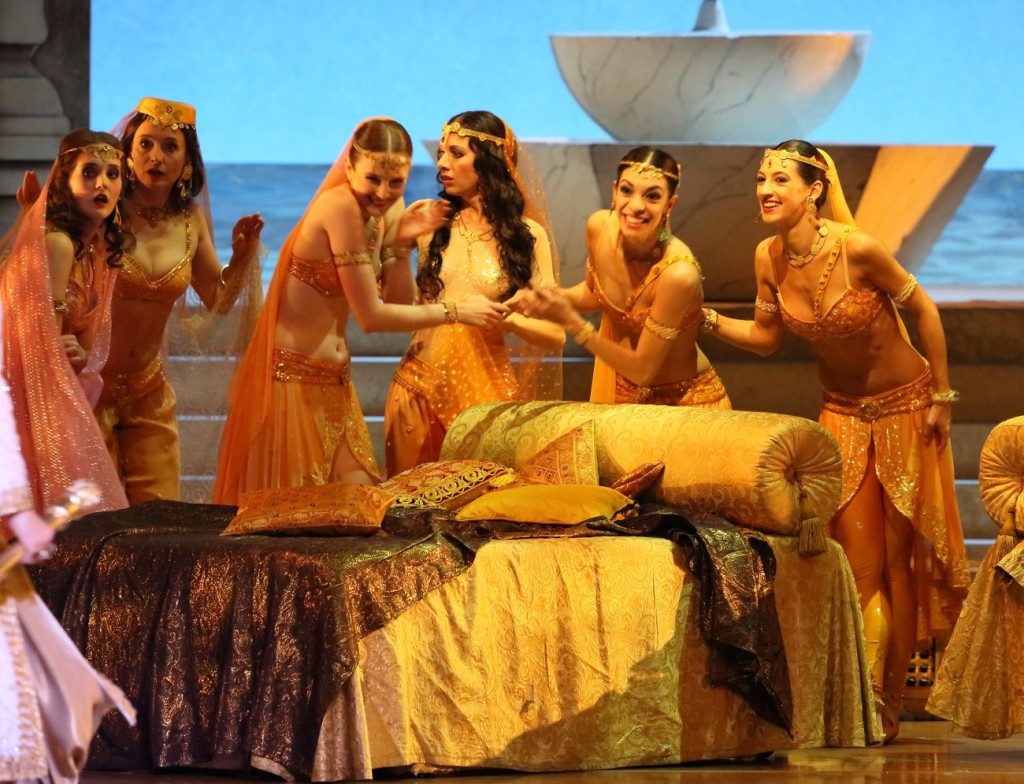 expect to be chosen at all. When her mother asked her how things had gone in Munich her first answer was “Munich is wonderful!” She didn’t even speak about the audition. But three weeks later Liška offered Rudic a contract. That was in 2005. Since then Rudic has danced in Munich.
expect to be chosen at all. When her mother asked her how things had gone in Munich her first answer was “Munich is wonderful!” She didn’t even speak about the audition. But three weeks later Liška offered Rudic a contract. That was in 2005. Since then Rudic has danced in Munich.
She describes her repertory as “a little bit of everything”. Neoclassical pieces like Forsythe’s “Artifact II” are her favorites but she also dances classical roles. Dancing a piece by Bausch was a new experience. “For the children…” seems to have shaken her self-perception like a small earthquake, revealing talents Rudic hadn’t been aware of before. She was cast for the part Nazareth Panadero had danced in Wuppertal. “At the audition each of the girls was asked to do the solo with 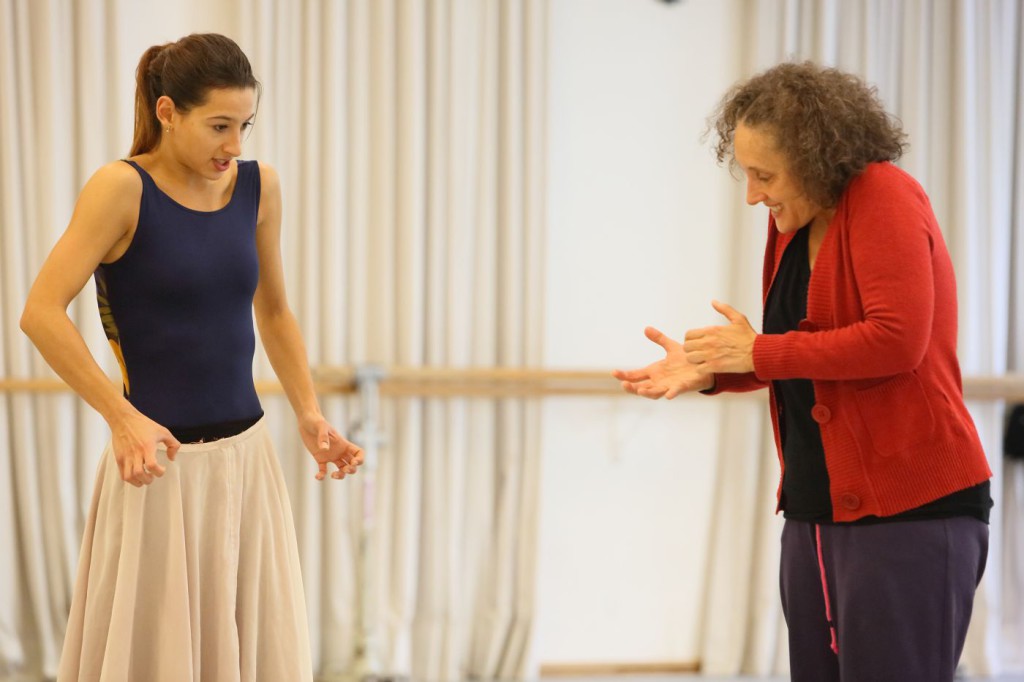 the eggs and the pan. The Wuppertal dancers all sat at the front filming us. We had to go one by one. I thought I’d never be able to do that solo. It was just scary.” In the scene a woman in a long chiffon dress strides across the stage in brisk pace, holding forth about Spanish people eating eggs while vigorously beating eggs in a pan. “After the audition I was convinced that I hadn’t done well. In the afternoon some of us were called back to learn some more of the text, but I wasn’t asked.
the eggs and the pan. The Wuppertal dancers all sat at the front filming us. We had to go one by one. I thought I’d never be able to do that solo. It was just scary.” In the scene a woman in a long chiffon dress strides across the stage in brisk pace, holding forth about Spanish people eating eggs while vigorously beating eggs in a pan. “After the audition I was convinced that I hadn’t done well. In the afternoon some of us were called back to learn some more of the text, but I wasn’t asked.
Then at the beginning of the new season the Wuppertal team arrived with a first provisional cast list and handed me the script for Nazareth’s role. I read through it and thought: No, this must be a mistake! No, not me! I was completely shocked! They must have seen some hidden talent. The 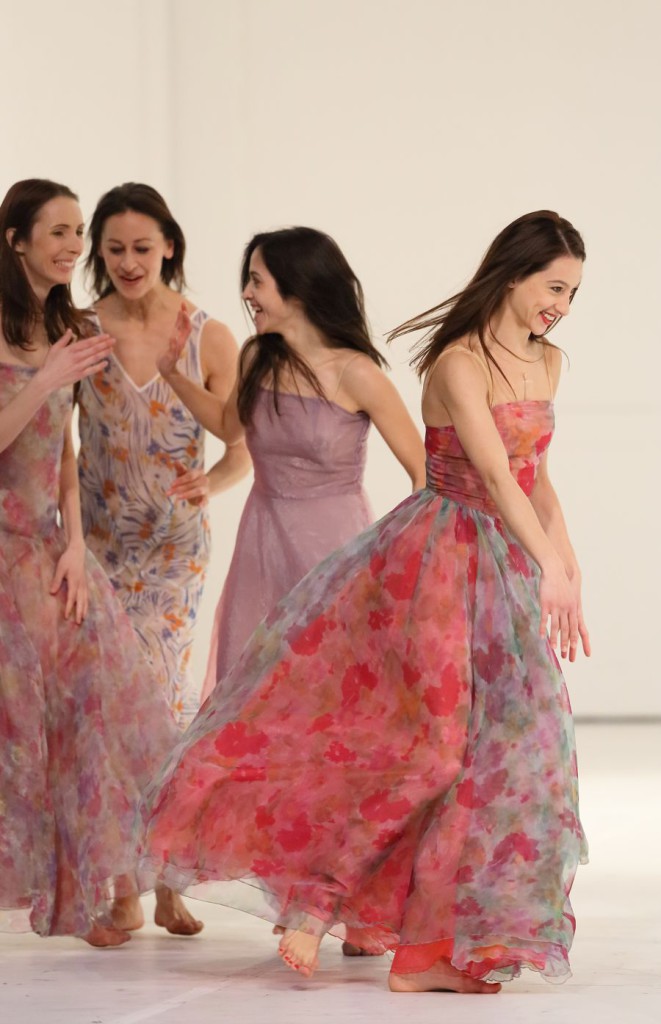
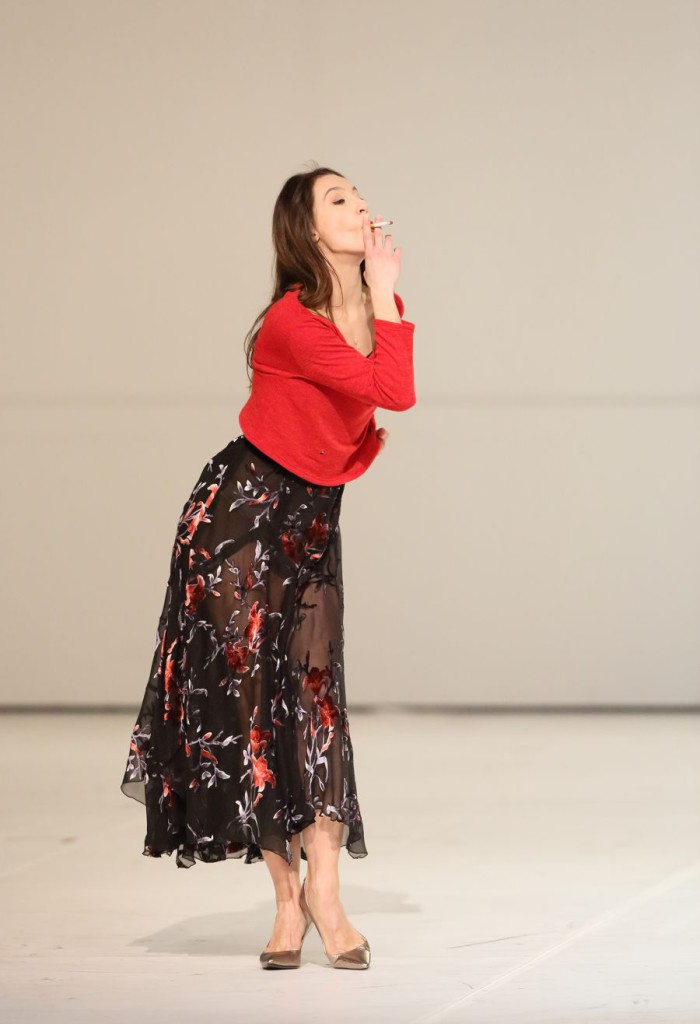 Wuppertal colleagues have an incredibly good eye for the right people. They were observing us the whole time. So maybe they saw me sitting on the sideline, joking with other girls and that tipped the balance. Because it’s hardly possible that they chose me just from how I beat the eggs!”
Wuppertal colleagues have an incredibly good eye for the right people. They were observing us the whole time. So maybe they saw me sitting on the sideline, joking with other girls and that tipped the balance. Because it’s hardly possible that they chose me just from how I beat the eggs!”
Together with Panadero, Rudic worked through her speaking parts from scratch. “Sometimes I would not breathe in and the word would come out like a squeak. I had to learn when to pause. But it wasn’t about copying Nazareth one-to-one. She always told me that as long as the words come out naturally and I feel them before I say them it’s correct. I constantly had to resonate with my emotions. They determined my acting.”
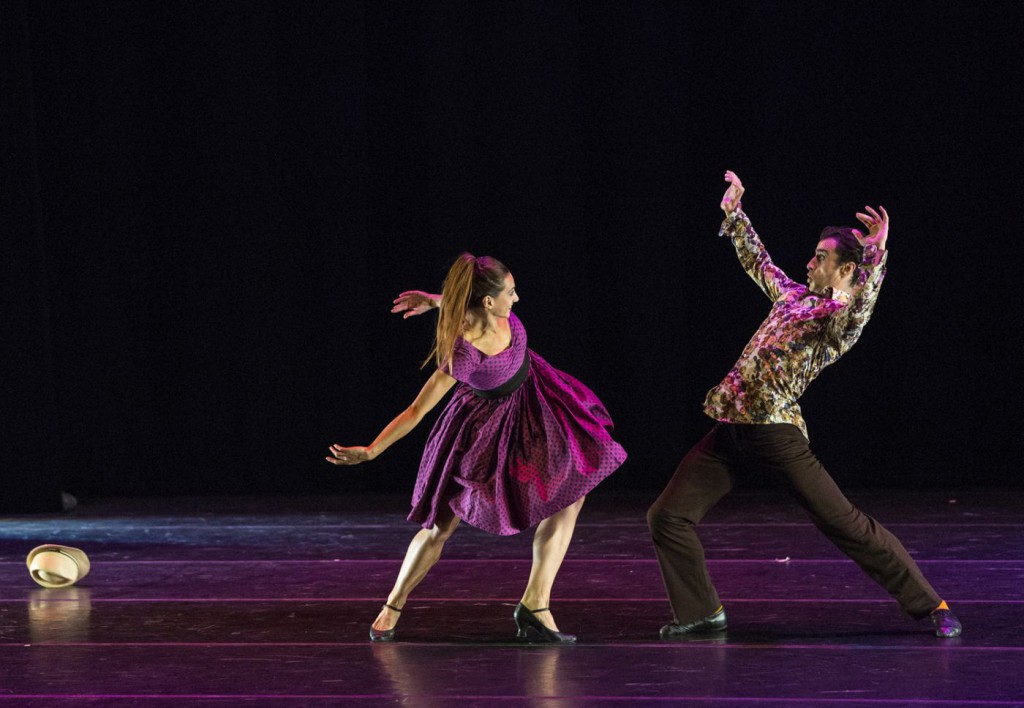 Rudic is looking forward to what the next season, the first under the reign of Igor Zelensky, will bring. For the moment she is completely and happily absorbed by planning her own wedding. Her husband-to-be, Tigran Mikayelyan, also dances with the Bavarian State Ballet. He is one of the five Armenians who founded “Forceful Feelings”, a dance troupe aiming to promote the art form in their home country. Talking about this Rudic’s excitement climbs to an even higher level. Of course, she is dancing with “Forceful Feelings” and is helping to prepare the troupe’s next performances in Zurich. Buzzing with organizing the upcoming events, Rudic’s positive energy seems inexhaustible. I wonder if she is aware of her power.
Rudic is looking forward to what the next season, the first under the reign of Igor Zelensky, will bring. For the moment she is completely and happily absorbed by planning her own wedding. Her husband-to-be, Tigran Mikayelyan, also dances with the Bavarian State Ballet. He is one of the five Armenians who founded “Forceful Feelings”, a dance troupe aiming to promote the art form in their home country. Talking about this Rudic’s excitement climbs to an even higher level. Of course, she is dancing with “Forceful Feelings” and is helping to prepare the troupe’s next performances in Zurich. Buzzing with organizing the upcoming events, Rudic’s positive energy seems inexhaustible. I wonder if she is aware of her power.
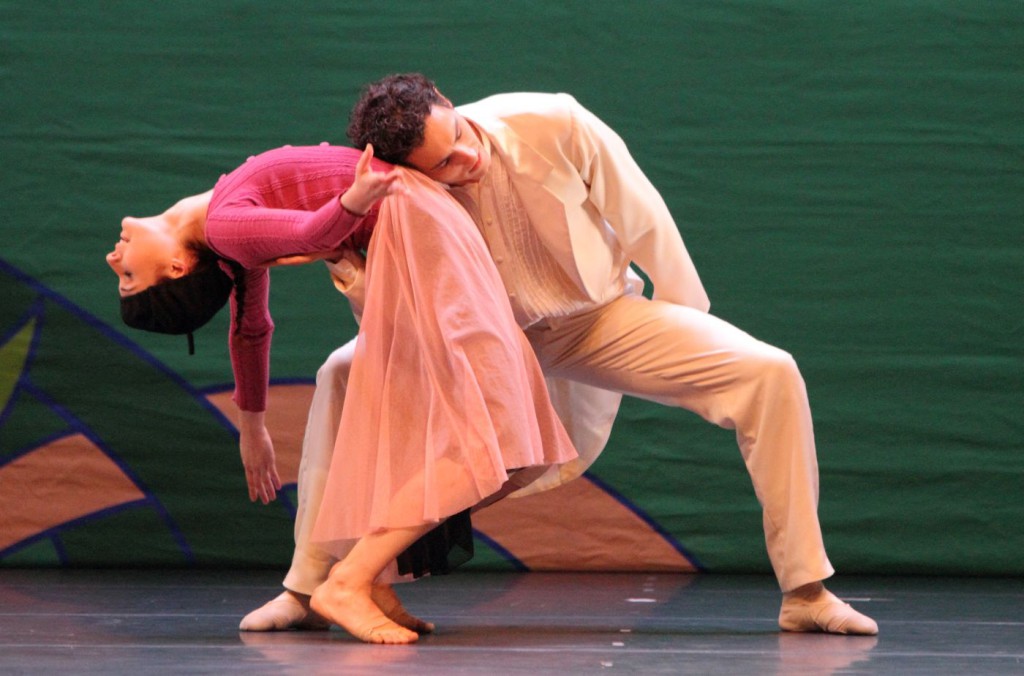 One senses immediately that Matej Urban is comfortable within himself. The twenty-nine-year-old radiates warmth and calmness, his eyes twinkling with humor and curiosity.
One senses immediately that Matej Urban is comfortable within himself. The twenty-nine-year-old radiates warmth and calmness, his eyes twinkling with humor and curiosity.
Urban, born in Prague, started ballet at the age of six at the private school of Ján Nemec, a principal of the National Ballet of Prague. A poster advertising Nemec’s new school had attracted the boy’s attention. He saw Nemec dance, was impressed by his jumps and wanted to do the same. After pre-ballet school Urban enrolled at Prague’s Conservatory where he studied with Alice Kovářová, Alena Drapalíková, Ivan Krob and Jaroslav Slavický, the father of Lukáš Slavický.
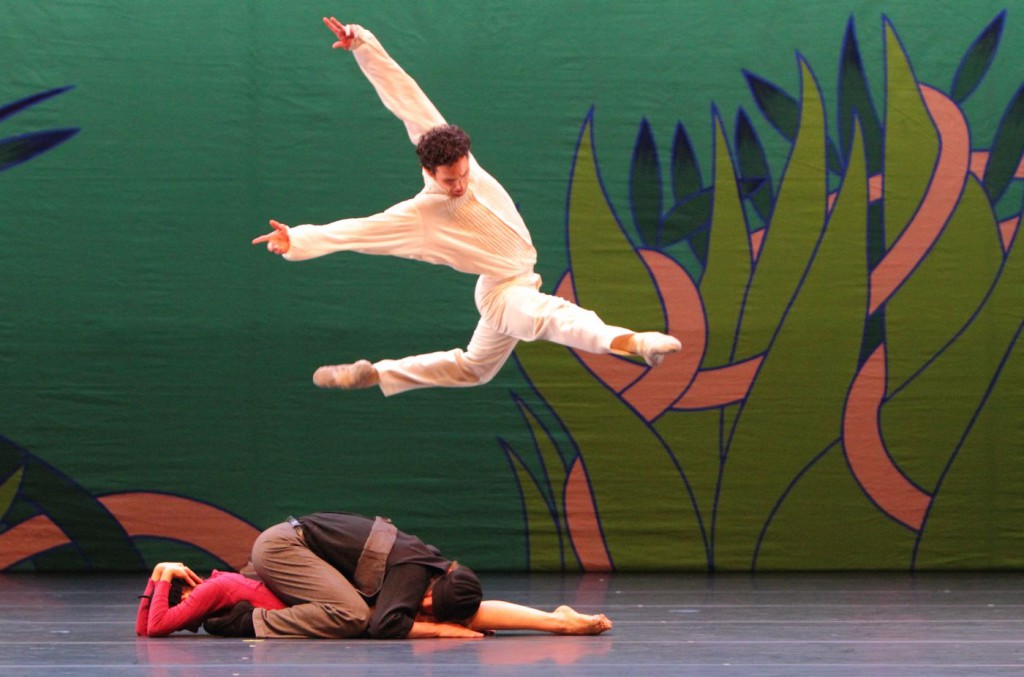 Urban’s first engagement was with the National Theatre of Prague where he quickly was entrusted with major roles. Searching for new challenges he joined the Bavarian State Ballet two years later. Witnessing the Munich principals’ high standards inspired him and helped him push forward. Soon Urban was dancing leading roles. He was Colas in “La Fille mal gardée”; Birbanto in “Le Corsaire”; Onegin and Tybalt in Cranko’s ballets; Armand Duval in Neumeier’s “Lady of the Camellias”, the King in his “Illusions – like Swan Lake” and Theseus/Oberon in his “A Midsummer Night’s Dream”.
Urban’s first engagement was with the National Theatre of Prague where he quickly was entrusted with major roles. Searching for new challenges he joined the Bavarian State Ballet two years later. Witnessing the Munich principals’ high standards inspired him and helped him push forward. Soon Urban was dancing leading roles. He was Colas in “La Fille mal gardée”; Birbanto in “Le Corsaire”; Onegin and Tybalt in Cranko’s ballets; Armand Duval in Neumeier’s “Lady of the Camellias”, the King in his “Illusions – like Swan Lake” and Theseus/Oberon in his “A Midsummer Night’s Dream”.
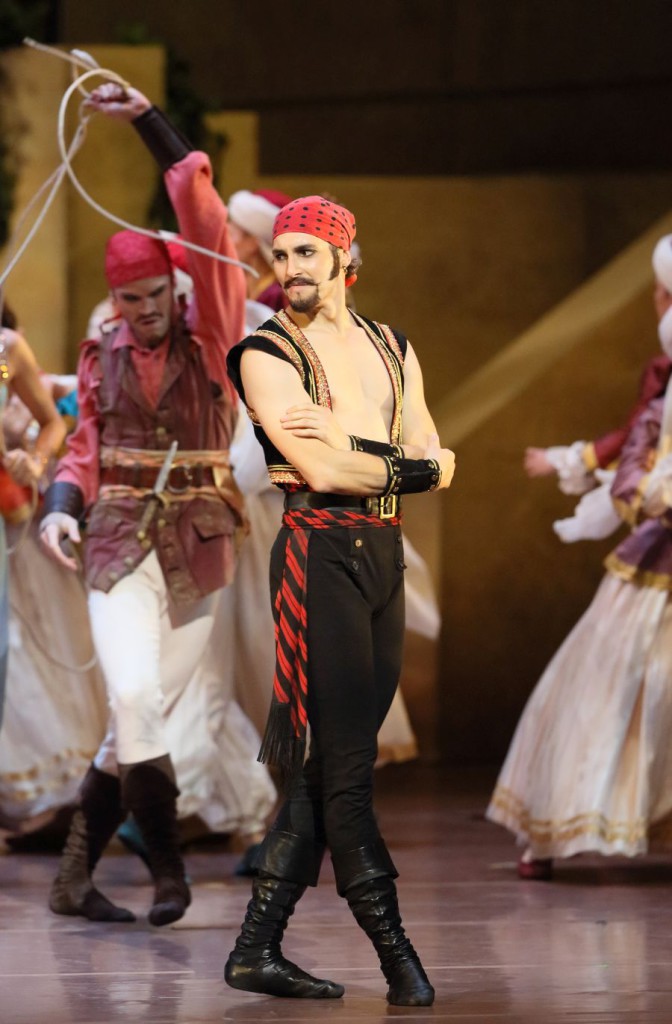
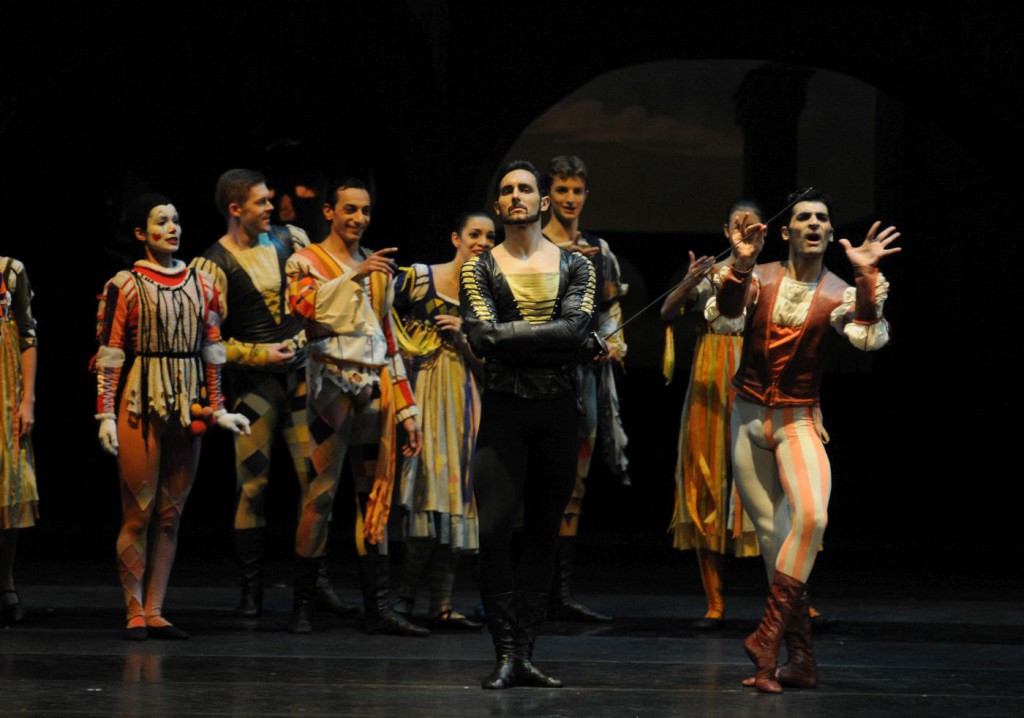 “I love exploring the character of a figure, to feel what they felt. I can be the bad guy and the good one. Both facets are inside of me and I enjoy to not being fixed on one character.” In “For the children…” Urban danced the role of Wuppertal’s Dominique Mercy. “Compared to other roles of the piece mine was neither technically nor physically demanding. Dominique Mercy wasn’t young when creating the role. Now, aged sixty-five, he still performs it. Instead I had to imbue relatively simple movements with feeling from inside. I had to understand the poetry of each possibility of movement and make it look true, not pathetic.” Urban never copies a colleague’s interpretation of a role. He always tries to find himself in the role, to offer something of himself, to be honest. He has depth. Being well-balanced allows him to plumb more deeply into characters than others.
“I love exploring the character of a figure, to feel what they felt. I can be the bad guy and the good one. Both facets are inside of me and I enjoy to not being fixed on one character.” In “For the children…” Urban danced the role of Wuppertal’s Dominique Mercy. “Compared to other roles of the piece mine was neither technically nor physically demanding. Dominique Mercy wasn’t young when creating the role. Now, aged sixty-five, he still performs it. Instead I had to imbue relatively simple movements with feeling from inside. I had to understand the poetry of each possibility of movement and make it look true, not pathetic.” Urban never copies a colleague’s interpretation of a role. He always tries to find himself in the role, to offer something of himself, to be honest. He has depth. Being well-balanced allows him to plumb more deeply into characters than others.
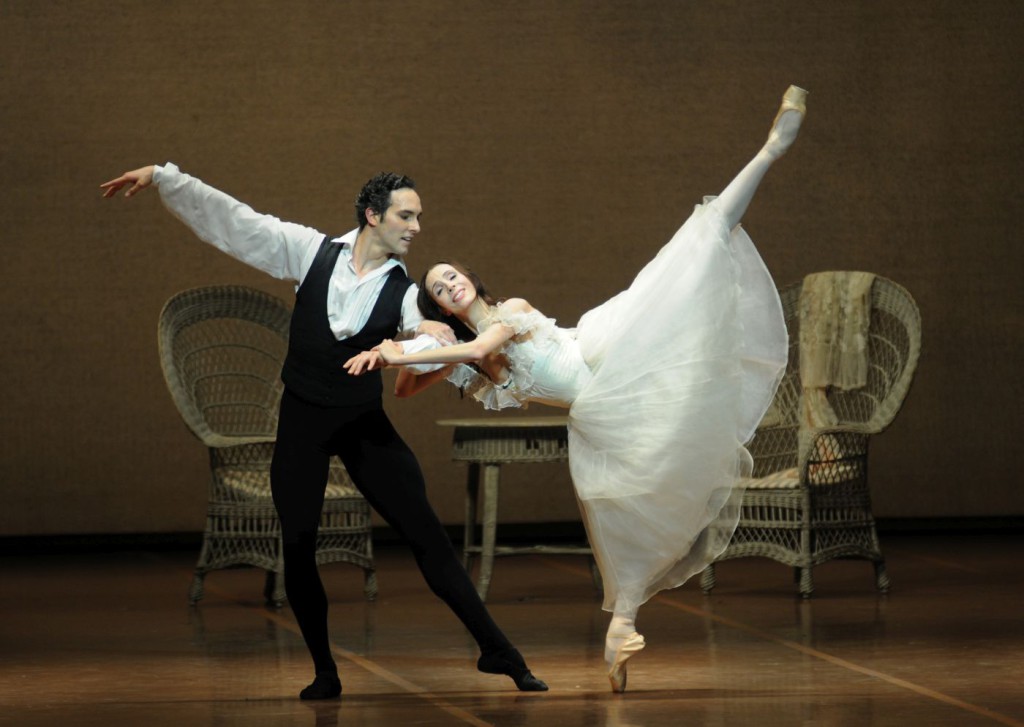 The process of working on a role is essential for Urban but he also wants to achieve a satisfying result. “I need to feel that I did a good job.” Feedback and advice are important to him, by his ballet masters, colleagues and also by his wife, Stephanie Hancox, who is also a soloist with the company. But in the end he is his main judge. “I’ve always fought with my technique. I still do.” Who doesn’t?
The process of working on a role is essential for Urban but he also wants to achieve a satisfying result. “I need to feel that I did a good job.” Feedback and advice are important to him, by his ballet masters, colleagues and also by his wife, Stephanie Hancox, who is also a soloist with the company. But in the end he is his main judge. “I’ve always fought with my technique. I still do.” Who doesn’t?
In Bausch’s piece Urban also had to speak which he found very difficult. “I had not that many lines to say and we had been very well prepared. But when we did the first run through with full audience at the dress rehearsal I stood there and thought I’d never be able to open my mouth now.” Yet he was and he delivered a stupendous performance. The speaking scene is the only one in which he is actively in contact with 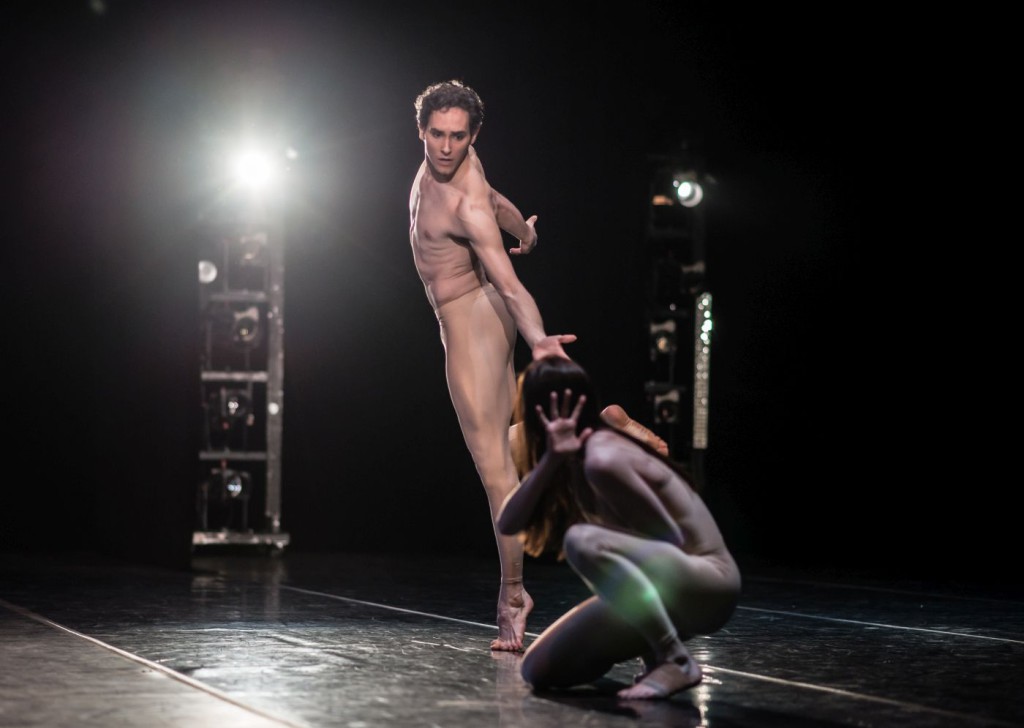 the audience. In all others he has to block out its existence. “I had to figure out, for example, how to raise my eyes towards the audience. Because one has the tendency to look directly at someone which wouldn’t be right. So I looked a bit downwards but that’s also not how it should be.” The unblinking nonchalance Urban finally brought to the scene sticks in my mind.
the audience. In all others he has to block out its existence. “I had to figure out, for example, how to raise my eyes towards the audience. Because one has the tendency to look directly at someone which wouldn’t be right. So I looked a bit downwards but that’s also not how it should be.” The unblinking nonchalance Urban finally brought to the scene sticks in my mind.
When I think back to the curtain calls of “For the children…” I had the impression something inside of Urban had clicked, a door had been opened. He smiles: “Well, we live for these moments. I have been lucky with the roles I have danced so far which offer lots of likewise experiences. There are moments in which you feel that the show has done something to you. You feel hurt, hit or, for example, as Albrecht in Mats Ek’s “Giselle”, when I was 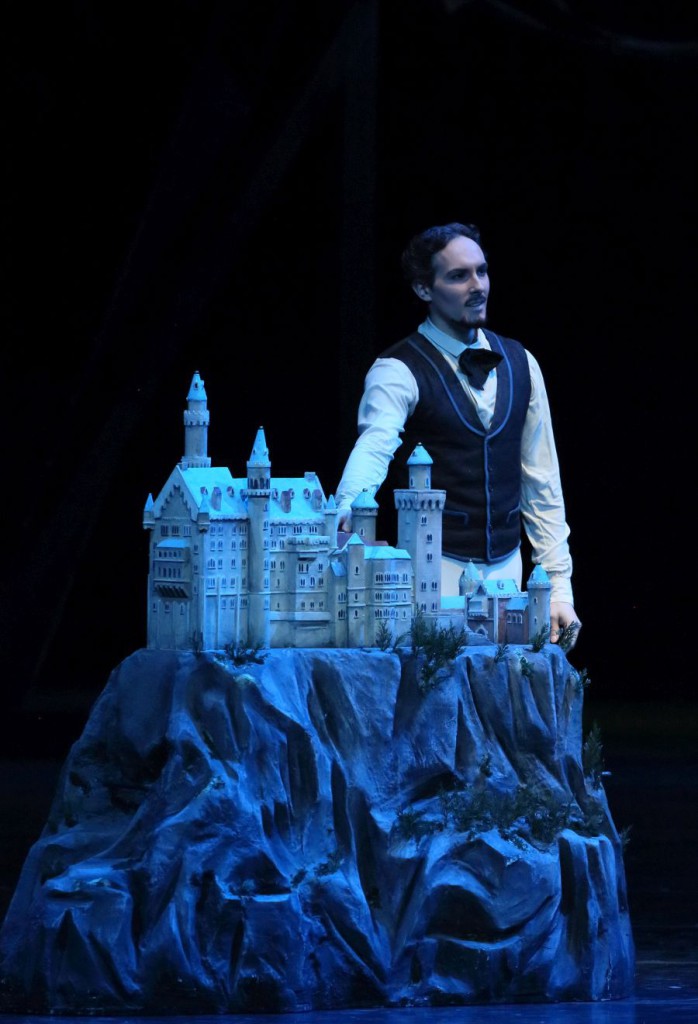
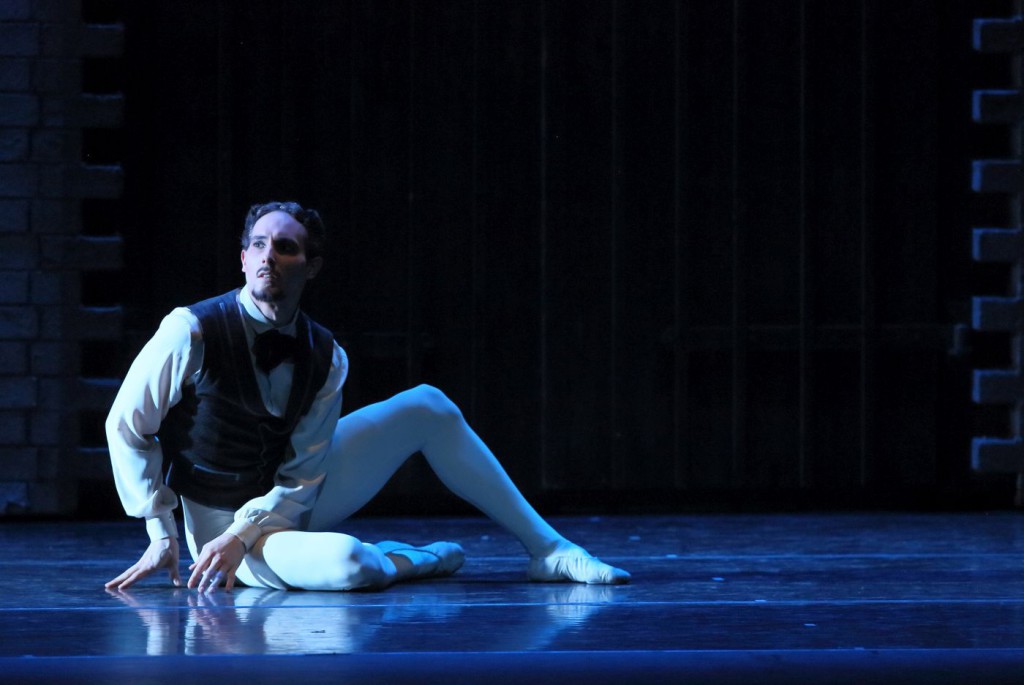 naked at the end, I felt abused. Abused by the piece. “Lady of the Camellias” has many strong emotions. When the show is finished you can’t sleep all night long because you’re not sure that what happened wasn’t true. It is the same with the King in “Illusions – like Swan Lake”. People asked me if I enjoyed the performance. How could I? The King is a fantastic role which brings very deep feelings along. But most of them aren’t pleasurable. During most of the ballet he is depressed. Only a few times he is overly happy or dreaming. But unlike Armand in “Lady of the Camellias” he never lives his love. When dancing the role I feel what he went through and I’m sorry for him.
naked at the end, I felt abused. Abused by the piece. “Lady of the Camellias” has many strong emotions. When the show is finished you can’t sleep all night long because you’re not sure that what happened wasn’t true. It is the same with the King in “Illusions – like Swan Lake”. People asked me if I enjoyed the performance. How could I? The King is a fantastic role which brings very deep feelings along. But most of them aren’t pleasurable. During most of the ballet he is depressed. Only a few times he is overly happy or dreaming. But unlike Armand in “Lady of the Camellias” he never lives his love. When dancing the role I feel what he went through and I’m sorry for him.
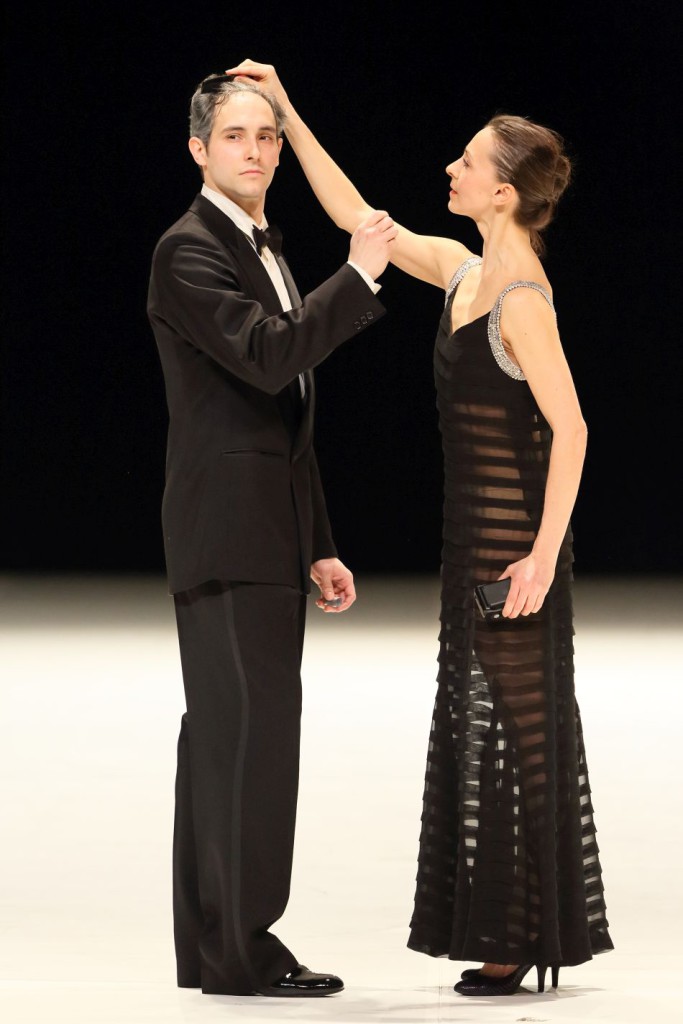 In the Bausch piece some dancers suddenly started crying backstage. Maybe also because the audience’s reaction was enthusiastic. It almost never happened before that they were clapping like this, giving us standing ovation from the first moment on. “For the children…” is a melancholic, poetic piece. Like with a poem everybody interprets it differently.”
In the Bausch piece some dancers suddenly started crying backstage. Maybe also because the audience’s reaction was enthusiastic. It almost never happened before that they were clapping like this, giving us standing ovation from the first moment on. “For the children…” is a melancholic, poetic piece. Like with a poem everybody interprets it differently.”
Urban loves ballet and reflects deeply on his performances. Yet he keeps a healthy balance between work and normal life. “When I was younger I used to mountainbike and even did small amateur races. Sadly it grows the wrong muscles and how to get 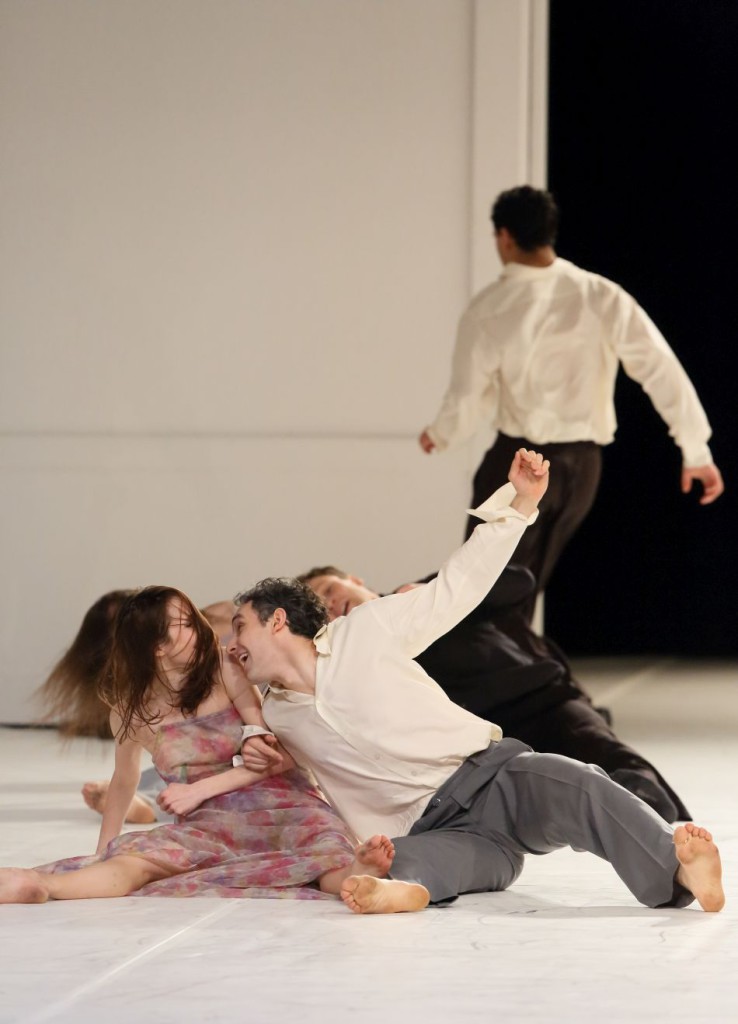 rid of huge thighs at the end?”, he laughs. “I’ve always liked sports cars and sometimes I take a car for a ride to clear my mind.” He plays the clarinet and likes doing woodwork like furniture and small things. That is something he can imagine to do as a job when leaving stage some day. But he also has discovered other talents: “Some dancers asked me to coach them for a performance and at first I was hesitant. I can teach the steps and give corrections but others certainly have more experience with teaching than me. But I gave it a try and was surprised how much fun I had. Maybe I’ll end as a ballet master. Or I do something completely different.”
rid of huge thighs at the end?”, he laughs. “I’ve always liked sports cars and sometimes I take a car for a ride to clear my mind.” He plays the clarinet and likes doing woodwork like furniture and small things. That is something he can imagine to do as a job when leaving stage some day. But he also has discovered other talents: “Some dancers asked me to coach them for a performance and at first I was hesitant. I can teach the steps and give corrections but others certainly have more experience with teaching than me. But I gave it a try and was surprised how much fun I had. Maybe I’ll end as a ballet master. Or I do something completely different.”
Urban just became a father of a daughter. He is a thoroughly positive person. “I like living”, he said. If someone else had made this statement it might have sounded banal. Out of Urban’s mouth it sums up his core.
(The interviews have been edited for clarity.)>
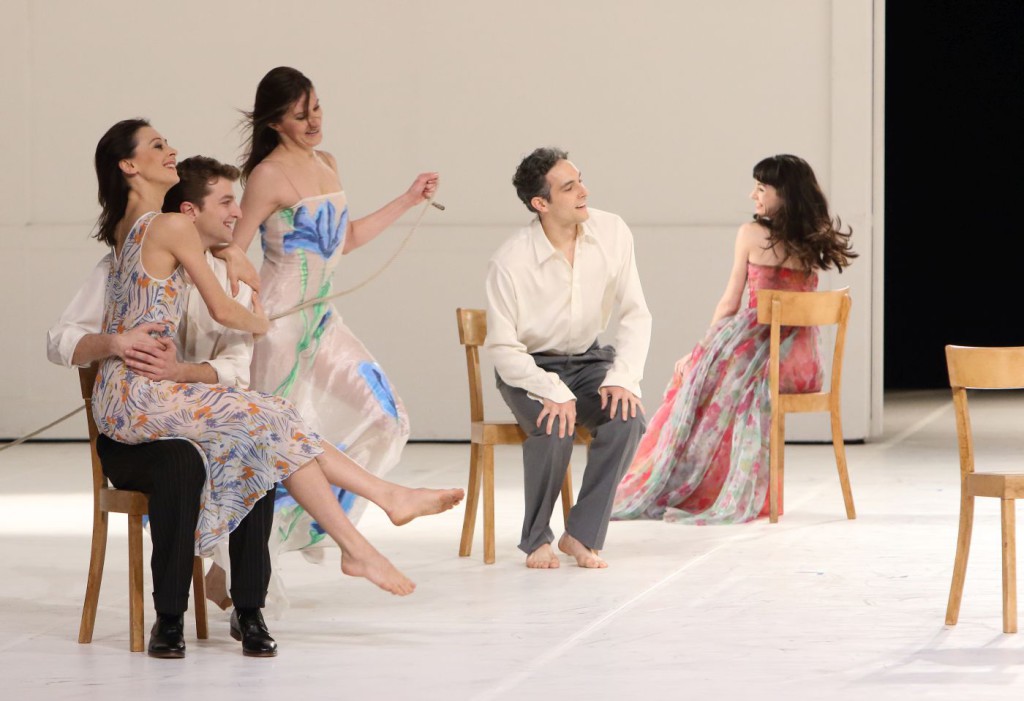
| Links: | Homepage of the Bavarian State Ballet | |
| Photos: | 1. | Portrait Matteo Dilaghi, Bavarian State Ballet © Sascha Kletzsch |
| 2. | Portrait Mia Rudic, Bavarian State Ballet © Sascha Kletzsch |
|
| 3. | Portrait Matej Urban, Bavarian State Ballet © Wilfried Hösl | |
| Matteo Dilaghi | ||
| 4. | Matteo Dilaghi (Lysander), “A Midsummer Night’s Dream” by John Neumeier, Bavarian State Ballet © Nicha Rodboon | |
| 5. | Matteo Dilaghi (Lysander) and Zuzana Zahradníková (Hermia), “A Midsummer Night’s Dream” by John Neumeier, Bavarian State Ballet © Nicha Rodboon | |
| 6. | Jonah Cook, Nicholas Losada, Matteo Dilaghi and Robin Strona, “Für die Kinder vo gestern, heute und morgen” by Pina Bausch, Bavarian State Ballet © Wilfried Hösl |
|
| 7. | Nicholas Losada, Jonah Cook, Robin Strona and Matteo Dilaghi, “Für die Kinder von gestern, heute und morgen” by Pina Bausch, Bavarian State Ballet © Wilfried Hösl | |
| 8. | Nicola Strada and Gianmarco Romano (sitting), Matteo Dilaghi, Alexa Tuzil and Jonah Cook, “Für die Kinder von g estern, heute und morgen” by Pina Bausch, Bavarian State Ballet © Wilfried Hösl |
|
| 9. | Matteo Dilaghi, “Für die Kinder vo gestern, heute und morgen” by Pina Bausch, Bavarian State Ballet © Wilfried Hösl |
|
| Mia Rudic | ||
| 10. | Mia Rudic and Léonard Engel, “Artifact II” by William Forsythe, Bavarian State Ballet © Nicha Rodboon | |
| 11. | Donna-Mae Burrows, Antonia McAuley, Sophia Carolina Fernandes, Mia Rudic and ensemble, “Le Corsaire” by Marius Petipa and Ivan Líška, Bavarian State Ballet © Wilfried Hösl | |
| 12. | Mia Rudic and Nazareth Panadero, rehearsal of “Für die Kinder von gestern, heute und morgen”, chor.: Pina Bausch, Bavarian State Ballet © Wilfried Hösl |
|
| 13. | Mia Rudic, “Für die Kinder von gestern, heute und morgen” by Pina Bausch, Bavarian State Ballet © Wilfried Hösl |
|
| 14. | Daria Sukhorukova, Séverine Ferrolier, Joana de Andrade and Mia Rudic, “Für die Kinder von gestern, heute und morgen” by Pina Bausch, Bavarian State Ballet © Wilfried Hösl |
|
| 15. | Mia Rudic and Tigran Mikayelyan, performance of “Forceful Feelings” © Ute Fischbach-Kirchgraber | |
| Matej Urban | ||
| 16. | Gözde Özgür (Giselle) and Matej Urban (Albrecht), “Giselle” by Mats Ek, Bavarian State Ballet © Wilfried Hösl | |
| 17. | Gözde Özgür (Giselle), Lukáš Slavický (Hilarion) and Matej Urban (Albrecht), “Giselle” by Mats Ek, Bavarian State Ballet © Wilfried Hösl | |
| 18. | Matej Urban (Tybalt) and ensemble, “Romeo and Juliet” by John Cranko, Bavarian State Ballet © Charles Tandy | |
| 19. | Matej Urban (Birbanto) and ensemble, “Le Corsaire” by Marius Petipa and Ivan Líška, Bavarian State Ballet © Wilfried Hösl | |
| 20. | Matej Urban (Armand Duval) and Daria Sukhorukova (Marguerite Gautier), “Lady of the Camellias” by John Neumeier, Bavarian State Ballet © Charles Tandy | |
| 21. | Matej Urban and Stephanie Hancox, “The Exiles” by José Limón, Bavarian State Ballet © Nicha Rodboon | |
| 22. | Matej Urban (The King), “Illusions – like Swan Lake” by John Neumeier, Bavarian State Ballet © Wilfried Hösl | |
| 23. | Matej Urban (The King), “Illusions – like Swan Lake” by John Neumeier, Bavarian State Ballet © Wilfried Hösl | |
| 24. | Matej Urban and Séverine Ferrolier, “Für die Kinder von gestern, heute und morgen” by Pina Bausch, Bavarian State Ballet © Wilfried Hösl | |
| 25. | Daria Sukhorukova, Matej Urban and ensemble, “Für die Kinder von gestern, heute und morgen” by Pina Bausch, Bavarian State Ballet © Wilfried Hösl | |
| 26. | Séverine Ferrolier, Matteo Dilaghi, Zuzana Zahradníková, Matej Urban and Marta Navarrete Villalba, “Für die Kinder von gestern, heute und morgen” by Pina Bausch, Bavarian State Ballet © Wilfried Hösl | |
| Editing: | Laurence Smelser |
